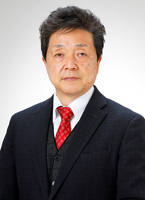Japanese companies should aim for “self-employment” rather than “job” type employment Hajime Ota (Professor of Doshisha University)

As digitalization and globalization expose the negative effects of the seniority system and call for reskilling, the chorus of calls for ” from a membership-based system to a job-based system” is not going anywhere. However, when companies try to adopt job-based employment, they run into many obstacles. Job types are incompatible with assignments and transfers led by the human resources department, and employees cannot be simply dismissed just because a particular job is no longer needed within the company.
An even bigger problem is that the work style of specifically defining each employee’s job and signing a contract does not suit the rapidly changing business environment known as the VUCA era.
VUCA is a coined word made up of the initials of Volatility, Uncertainty, Complexity, and Ambiguity. In society and business, it indicates a situation where there is a high level of uncertainty and it is difficult to predict the future.
In the first place, job-type employment is a product of post-industrial society, especially the era of mass production of a small number of products. Despite this, why do we insist on introducing the job type even though we have changed the signboards such as ” Japanese-style job type” and “hybrid type”?
On the other hand, when looking around vibrant workplaces overseas, including Silicon Valley, new ways of working that are neither membership-based nor job-based are spreading. In addition to freelancers who undertake work under contract with companies, this is a work style in which even employees are responsible for a certain amount of work, as if they were semi-self-employed. I call this “self-employed employment” and “self-employed employee.” The background is technological innovation, including IT. The scope of work has expanded through the use of the Internet and AI, and tasks that were previously done in groups can now be completed by individuals. It has also become possible to collaborate remotely using various tools.
The self-employed model is also attractive to working people. According to various surveys, Japanese people’s engagement (enthusiasm) with work is among the lowest in the world, but freelance engagement is as high as it is in Europe and the United States. It has been reported that even in companies that have employees work on a self-employed basis, motivation among young employees has increased and turnover has decreased (my book, ” The era of self-employment” – job-based employment is already obsolete!”, published by President Publishing). In addition, a recent web survey found that more people would prefer to work in a self-employed style than in a job-based style, with more than half (51%) citing self-employment as their ideal future work style. It shows how many people want to work autonomously and at their own pace.
As the birthrate declines and the population ages, companies are worrying about countermeasures against labor shortages and retention of young employees (reducing turnover). The self-employed model, in which each individual performs a set task autonomously, should be particularly attractive to small and medium-sized enterprises and companies with serious human resource shortages. Furthermore, the revised Act on Stabilization of Employment of Elderly Persons has made it mandatory for companies to make efforts to secure employment opportunities for people up to the age of 70, but many elderly people desire a more relaxed working style. The self-employed style of work is a strong option as it allows them to utilize their experience and ability to see things from a bird’s-eye view.
